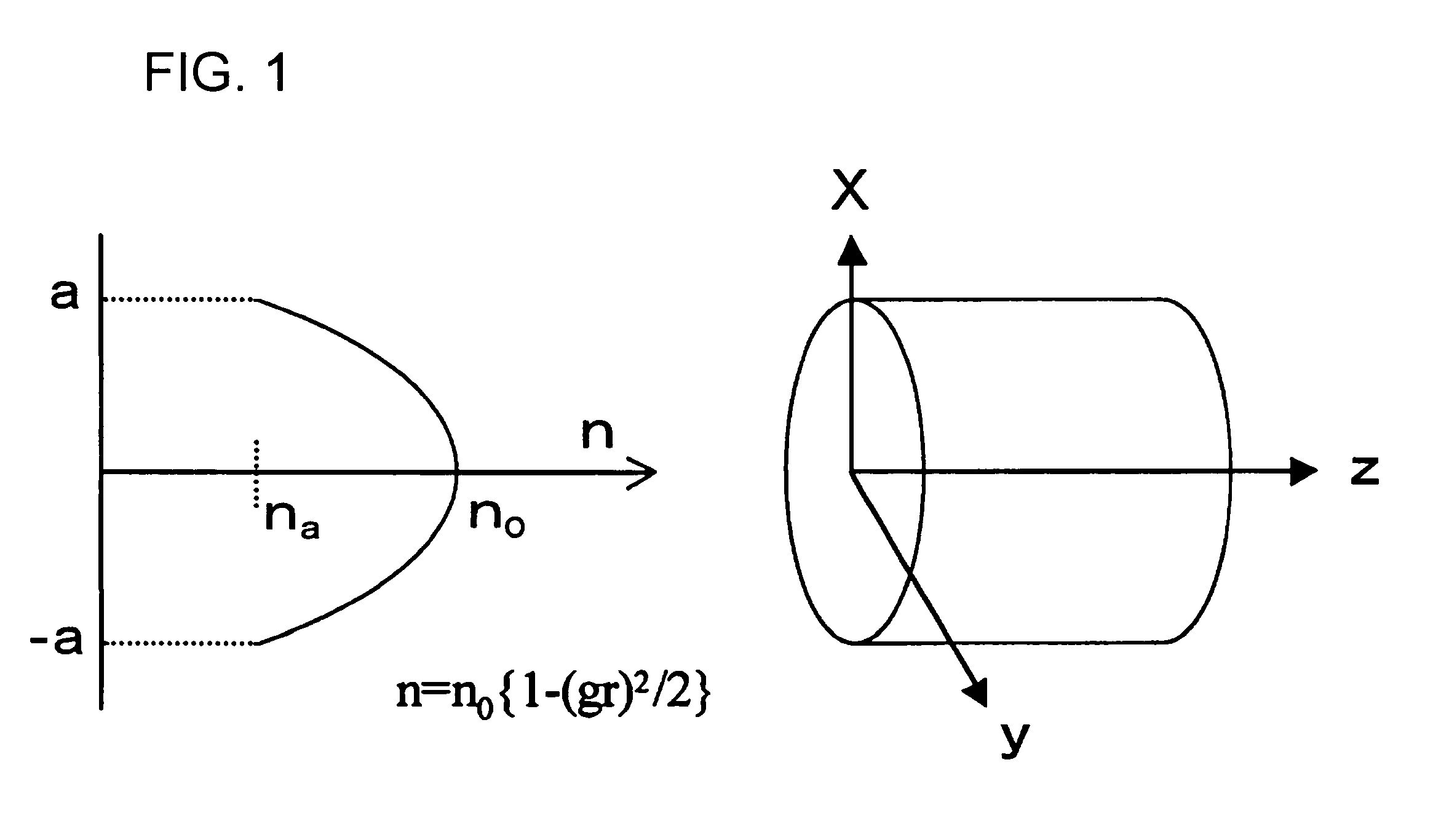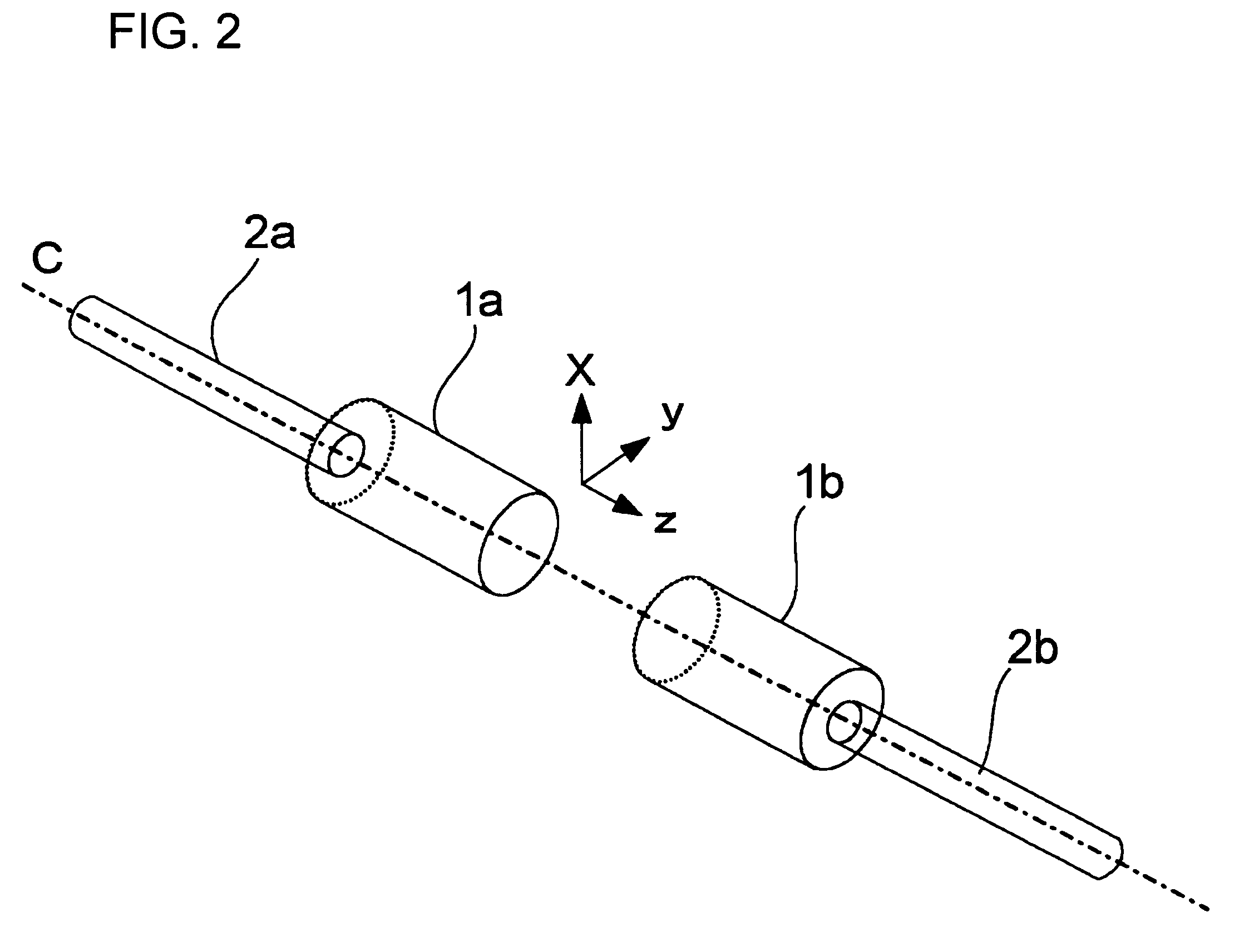Fiber optic collimator system, fiber optic collimator array, and manufacturing method of the fiber optic collimator system and fiber optic collimator array system
a technology of fiber optic collimator and array system, which is applied in the direction of manufacturing tools, instruments, optical elements, etc., can solve the problems of complex core alignment processing in various axial directions, and achieve the effect of efficient production, efficient fabricated, and remarkable facilitation
- Summary
- Abstract
- Description
- Claims
- Application Information
AI Technical Summary
Benefits of technology
Problems solved by technology
Method used
Image
Examples
embodiment 1
[0083]FIG. 7 shows the fiber optic collimator system of the first embodiment. The optic fibers 2a and 2b with GRIN lenses 1a and 1b are inserted from both sides of the tubular collimator holder 9, and then adhered and fixed to attach the optical element 10 (in this case, the optical isolator) to the center. Approximately 230 sets of the collimator systems are carefully fabricated. The horizontal displacements (position displacement D) with regard to the X and Y directions and the inclination angles (angle displacement) θx and θy of the opposed GRIN lenses are measured. FIG. 8 shows the accumulative counts of the horizontal displacements in the X and Y directions (position displacements). FIG. 9 shows the accumulative counts of the inclination displacements with regard to the X and Y directions (angle displacements) θx and θy. FIGS. 8 and 9 show that the horizontal displacements are distributed with the peak of −0.3 μM and approximately ±1 μm width, and the inclination angle displace...
embodiment 2
[0088]FIGS. 10 and 11 relate to the optical fiber collimator arrays of the second embodiment. The end portions of the GRIN lens attaching to the optical fiber are regularly arranged in eight (8) rows along periodic V-grooves 13 formed by chemical etching on the SiO2 board 12. Further, these are regularly laminated in eight (8) steps, fixed to a frame 14, and thereby 8×8 GRIN lens collimator arrays were produced. Using this collimator array, a set of optical fiber collimator arrays, into which two MEMS-type optical switch arrays 3 with 2 degrees of freedom shown in FIG. 3 are inserted, were carefully fabricated. The horizontal displacements in the X and Y directions (position displacement D) and the inclination angles (angle displacement) θx and θy were measured for each pair of the opposing GRIN lens. FIG. 12 shows the accumulative counts of the horizontal displacements in the X and Y directions (position displacement). FIG. 13 shows the accumulative counts of the inclination angles...
PUM
| Property | Measurement | Unit |
|---|---|---|
| degrees of freedom | aaaaa | aaaaa |
| reflection angles | aaaaa | aaaaa |
| inner diameters | aaaaa | aaaaa |
Abstract
Description
Claims
Application Information
 Login to View More
Login to View More - R&D
- Intellectual Property
- Life Sciences
- Materials
- Tech Scout
- Unparalleled Data Quality
- Higher Quality Content
- 60% Fewer Hallucinations
Browse by: Latest US Patents, China's latest patents, Technical Efficacy Thesaurus, Application Domain, Technology Topic, Popular Technical Reports.
© 2025 PatSnap. All rights reserved.Legal|Privacy policy|Modern Slavery Act Transparency Statement|Sitemap|About US| Contact US: help@patsnap.com



